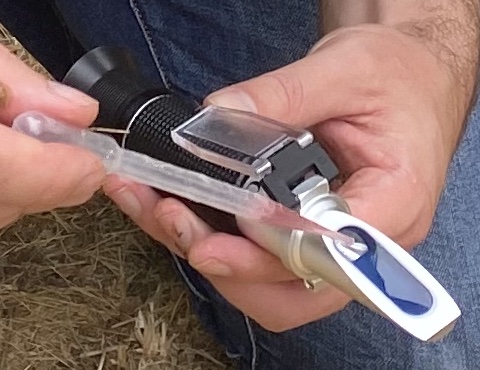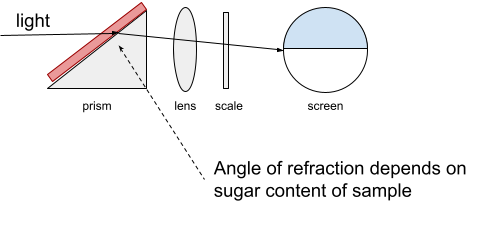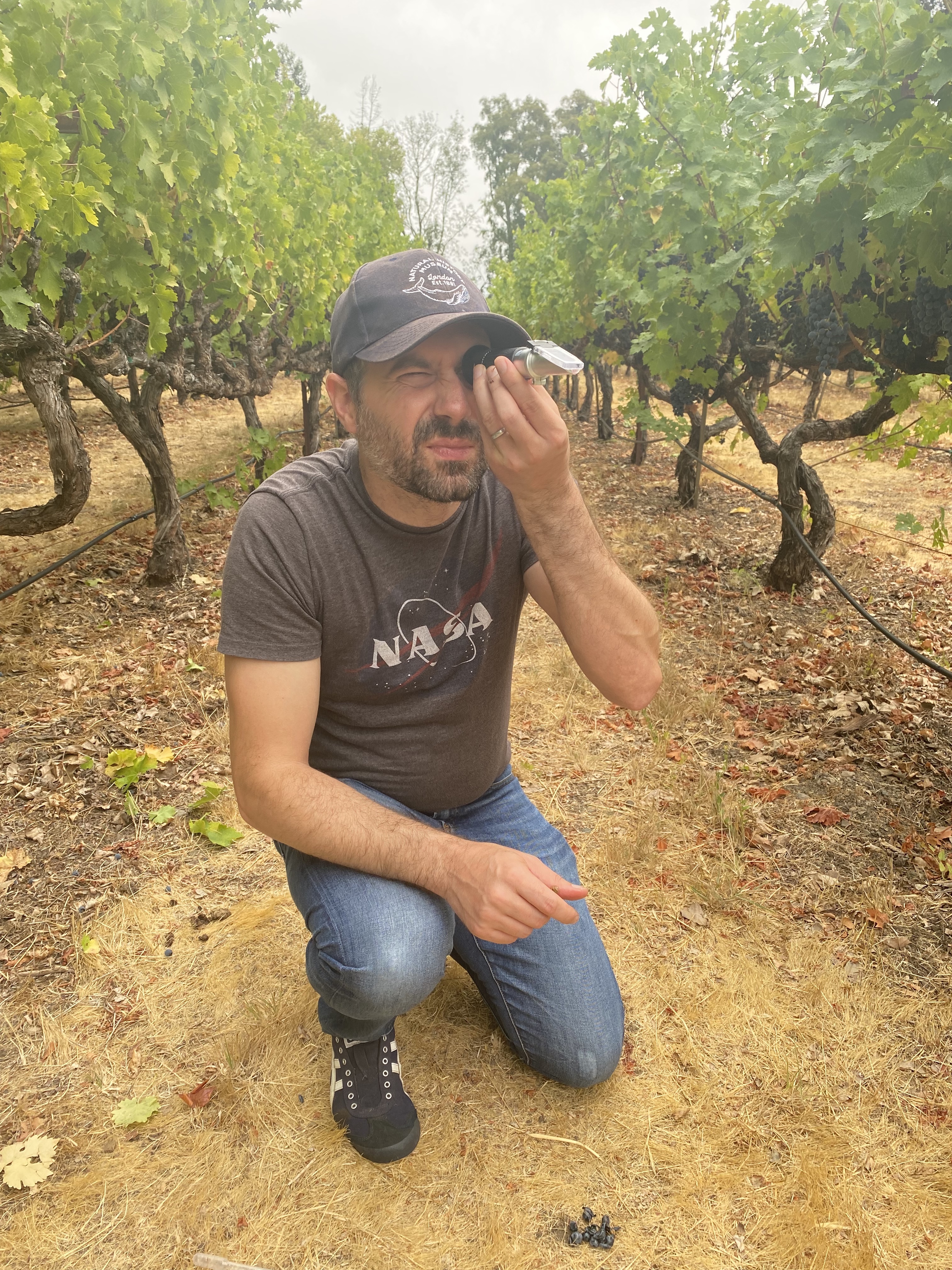Through the viewfinder
This year, while harvesting our Cabernet Sauvignon grapes, I had a chance to use this cool gizmo. It’s called a refractometer. A refractometer allows you to measure the sugar content of grapes right in the field! Compared to the hydrometer we use to measure the sugar content of our fermenting wine it’s super quick and easy to use. You simply smoosh up a few grapes to get their juice and drop it on to the little window at the front. Then hold it up to the light, look through the viewfinder and, like magic, you can read the sugar content (Brix) of the juice directly from the scale. The juice I was measuring in the video above has a Brix of 23.5. One degree Brix is 1 gram of sucrose in 100 grams of solution so this juice has 23.5g of sugar in each ~100ml.

eye dropping grape juice on the refractometer prism
How it works
When a light wave passes obliquely from one medium to another of different density it is deflected - it bends. That effect is called refraction. It’s the reason why the bottom of a pond looks shallower than it really is.
 Dissolved sugar content changes the density of water. (And grape juice!) The refractometer uses this property to great effect. Light bends at the junction between the prism in the refractometer and the juice solution you smear on top of it. With a low sugar concentration solution, the refractive index of the prism is much greater than that of the sample, creating a large refraction angle and a low reading on the screen. With a high concentration solution the light bends less and you read a line higher on the scale.
Dissolved sugar content changes the density of water. (And grape juice!) The refractometer uses this property to great effect. Light bends at the junction between the prism in the refractometer and the juice solution you smear on top of it. With a low sugar concentration solution, the refractive index of the prism is much greater than that of the sample, creating a large refraction angle and a low reading on the screen. With a high concentration solution the light bends less and you read a line higher on the scale.
Field blend
If you grow grapes this is an easy way to figure out when they will be ready to pick. We were able to use the refractometer to figure out the best field blend to keep the pH of our wine low enough. The grapes on the sunny (south facing) side of each row had a high sugar content - about 25 Brix. If we’d picked them all from that side the must would not have been acidic enough, making an unstable wine. On the shady side the sugar content was considerably lower (~23). We therefore picked about a third of our Cabernet from the shady side and the rest in the sun, to hopefully make a perfect blend. All thanks to the remarkably simple, remarkably effective refractometer. 🍷
